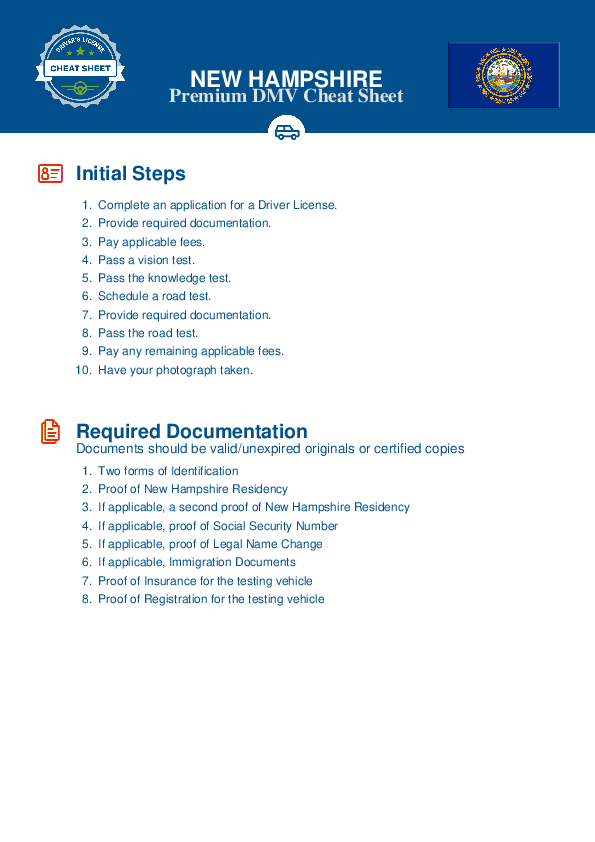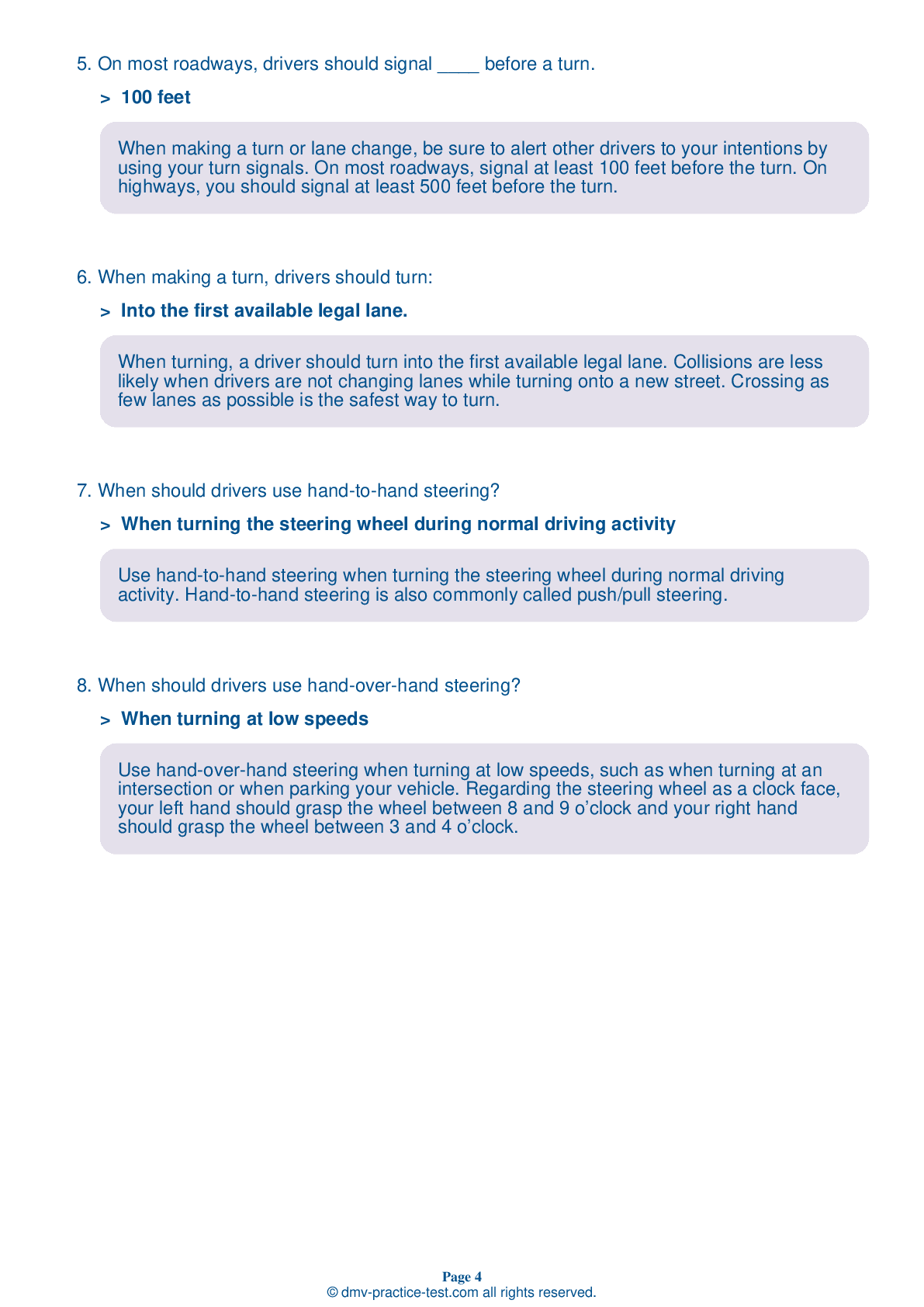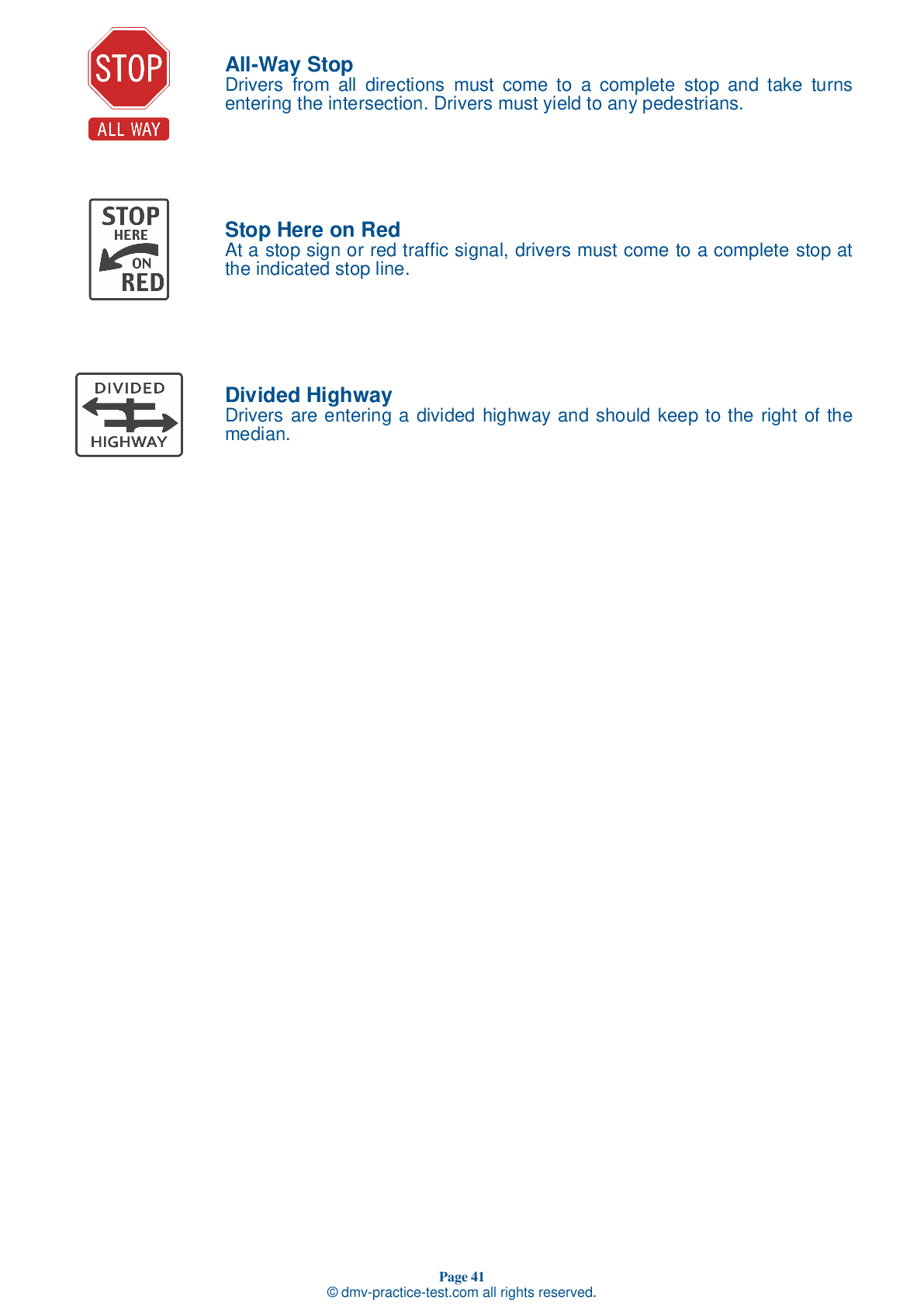FREE New Hampshire DMV Practice Test #5 Page 2 of 5
The DMV practise exams in New Hampshire have been updated for January 2025. It includes questions based on the most important traffic signals and legislation in the New Hampshire Driver Handbook for 2025. To study for the DMV driving permit test and driver's licence exam, use actual questions that are very similar (often identical!) to the DMV driving permit test and driver's licence exam.
Each question on the practise exam has a tip and explanation to help you recall the ideas. Questions about traffic rules, traffic signs, and driving statutes, as well as knowledge from the Driver Handbook, will be included in the written portion of the official New Hampshire DMV test.
You must properly answer 32 of the 40 questions to receive a passing mark. Take this New Hampshire DMV practise exam to help you prepare for your instruction permit or driver's licence.
The DMV exam is offered in a variety of languages.
Using any form of testing help will result in an automatic fail, and the DMV may take further action against your driver's licence, so avoid it.
9 . If a vehicle using high beams comes toward you, you should look toward ____ of the road.
If a vehicle approaching you is using its high beams and fails to dim them, you should glance toward the right side of the road. This will keep you from being blinded by the other vehicle’s headlights and will allow you to see well enough to stay on your course until the vehicle passes.
10 . Do not pass:
You should never pass if there is an oncoming vehicle in the passing lane, if your view is blocked by a curve or hill, at an intersection, before or on a railroad crossing or bridge, or in any other no passing zone. Unless you are on the opposite side of a multilane roadway with a median or shared center turn lane, you may not pass a stopped school bus that has its flashing red lights activated.
11 . You are driving at night and another vehicle is approaching from the opposite direction. Your headlights:
Do not use your high beam headlights when approaching or following another vehicle at night. Switch to the low beam setting to ensure the safety of everyone on the road.
12 . When parking uphill next to a curb, set the parking brake and:
When parking facing uphill on a street that has a curb, set your parking brake and turn your steering wheel away from the curb. This way, if your vehicle starts to roll, it will roll into the curb.
13 . When should drivers use hand-over-hand steering?
Use hand-over-hand steering when turning at low speeds, such as when turning at an intersection or when parking your vehicle. Regarding the steering wheel as a clock face, your left hand should grasp the wheel between 8 and 9 o’clock and your right hand should grasp the wheel between 3 and 4 o’clock.
14 . A driver entering public traffic from a driveway or private road:
If you are entering traffic from a driveway or private road, you should yield to drivers already on the public road. Merge safely into traffic when you are able to do so.
15 . This sign means:

Warning signs prepare drivers for upcoming road conditions and hazards and are usually yellow with black markings. This sign tells drivers that there is an upcoming stop sign and that they should prepare to come to a complete stop before proceeding.
16 . You have the right-of-way when turning left on which of the following traffic signals?
A green steady arrow means you may pass through the intersection in the direction that the arrow is pointing. Oncoming traffic is required to stop for turning traffic.
See the exact questions that will be on the 2025 New Hampshire DMV exam.
99.2% of people who use the cheat sheet pass the FIRST TIME
LT gives us an insight on how the cheat sheet provided her with all the study questions she needed before taking her test.
Joe initially studied with the handbook and failed his test, he eventually found us online, studied and pass his test the first time around.



